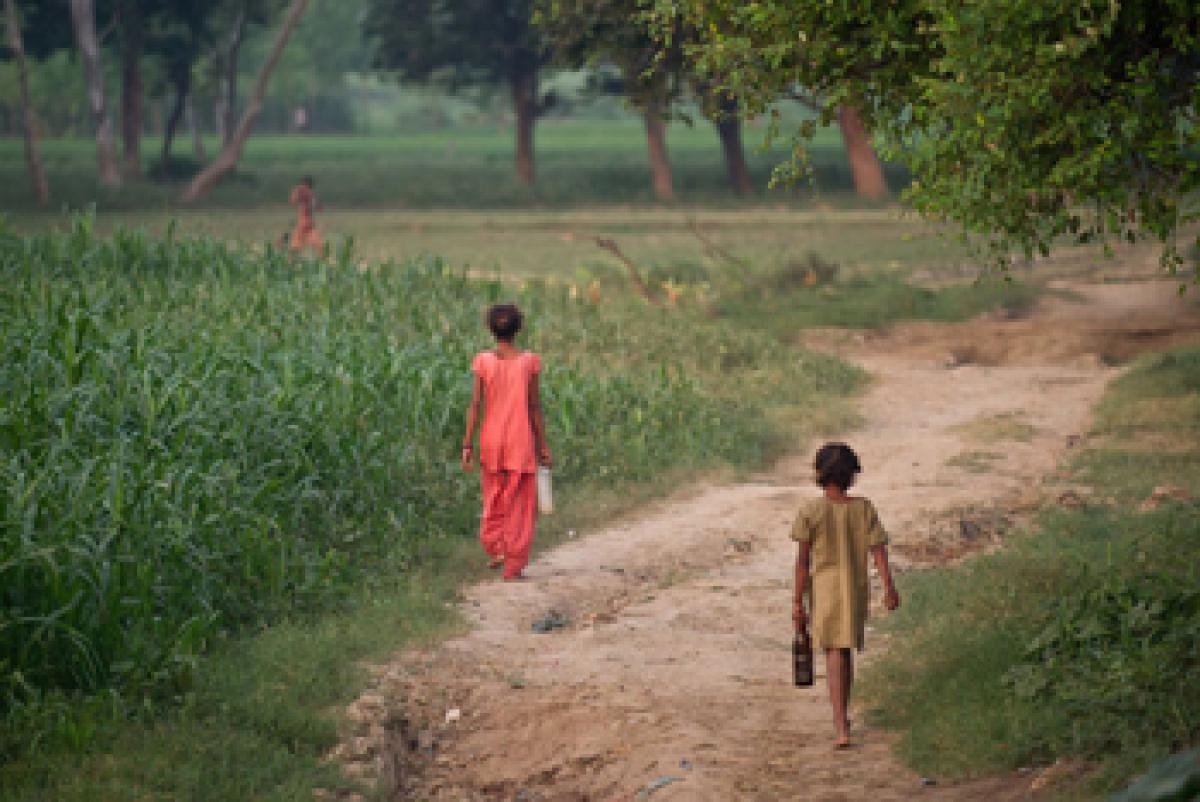Live
- Chanchalguda Jail Officials Say They Haven't Received Bail Papers Yet, Allu Arjun May Stay in Jail Tonight
- BJP leaders present evidence of illegal voters in Delhi, urge EC for swift action
- Exams will not be cancelled: BPSC chairman
- Nagesh Trophy: Karnataka, T.N win in Group A; Bihar, Rajasthan triumph in Group B
- YS Jagan condemns the arrest of Allu Arjun
- Economic and digital corridors to maritime connectivity, India and Italy building vision for future, says Italian Ambassador
- SMAT 2024: Patidar's heroics guide Madhya Pradesh to final after 13 years
- CCPA issues notices to 17 entities for violating direct selling rules
- Mamata expresses satisfaction over speedy conviction in minor girl rape-murder case
- Transparent Survey Process for Indiramma Housing Scheme Directed by District Collector
Just In

Poor sanitation has serious implications for the nutritional status of adolescent girls, as it leaves their bodies susceptible to infections that reduce their ability to absorb nutrients.
Poor sanitation has serious implications for the nutritional status of adolescent girls, as it leaves their bodies susceptible to infections that reduce their ability to absorb nutrients. This and much more has been revealed that the fear of sexual assault, the need for privacy, and the generally unusable state of sanitation facilities results in girls controlling their bladders for as long as 13 hours a day. This has significant, long-lasting repercussions on their overall as well as reproductive and sexual health
As we celebrated the International Women’s Day on 8th March, a recent report ‘Dignity for her’ on sanitation facilities for women across India by a strategic philanthropy foundation, Dasra, has revealed that 63 million out of India’s 113 million adolescent girls who are nearly 10% of its population do not have a private toilet that they can use.
Another 23% of girls drop out of school on reaching puberty due to a lack of facilities for them to manage their menstruation. In both urban and rural contexts, over 50% of adolescent girls lack access to adequate sanitation facilities. In India, 3,34,000 children under age five die every year due to inadequate sanitation. That is 915 children every day.
Sanitation gaps cost India a staggering Rs 2.4 trillion each year that is 6.4% of its GDP. On the other hand, comprehensive sanitation and hygiene interventions can avert 45% of health issues, and avoid other adverse impacts related to water, welfare and tourism. Inadequate sanitation is more than just inconvenient it also claims lives, dignity and productivity.
Poor sanitation means dying children, uneducated girls, vulnerable women and unhealthy living conditions. It is not just a symptom of poverty; it is a key contributing factor. Poor access to sanitation, which has consequences that will play out across the span of her lifetime, affecting her identity for search of a suitable private sanitation space comes with constant threat of sexual harassment and rape, which can stunt her confidence, self-esteem and sense of identity.
Poor sanitation also has serious implications for the nutritional status of adolescent girls, as it leaves their bodies susceptible to infections that reduce their ability to absorb nutrients This and much more has been revealed that the fear of sexual assault, the need for privacy, and the generally unusable state of sanitation facilities results in girls controlling their bladders for as long as 13 hours a day.
This has significant, long-lasting repercussions on their overall as well as reproductive and sexual health. The report also claims that girls tend to miss school an average of three to six days a month due to the inability to effectively manage their menstrual health at school. This eventually contributes to almost 23% of girls dropping out of school on reaching puberty and, in turn, critically undermines their potential as individuals and future workers.70% of girls in India do not know what menstruation is before they get their first period.
They also suffer due to the misinformation that typically surrounds good hygiene practices. This gap has a detrimental impact on many areas of an adolescent girl’s life, including identity and health. Adolescent girls are more vulnerable than women since they are at a point where they have to deal with a changing physical identity, and have neither been hardened by experience nor have the ability to deal with how others perceive them.
Poor access to sanitation and hygiene facilities makes them even more vulnerable to sexual harassment and rape, undermining their confidence and the evolution of their changing identity, the report claims. The report also claims that the government’s target of building 4,00,000 toilets in schools across India will not resolve the problem unless stakeholders ensure regular maintenance and repair of these toilets, which is historically where similar initiatives have faltered.
Merely building more toilets will not produce the desired long-term benefits of sanitation for that, there is need of systemic value-chain approach that addresses behavior change and sustainable infrastructure. Changing mindsets, among those who produce the solution as well as those who consume it is paramount. When that happens, the solution will self-sustain, stated the report To end open defecation in India, attitudes towards sanitation are just as important as access to sanitation.
People often prefer defecating in the open, sometimes merely because it has become a habit, sometimes because they have concerns about existing sanitation facilities. One survey found that people in rural India did not want to regularly use existing pit latrines as they were worried the pit would fill up too quickly.
In order to achieve improved sanitation and hygiene for adolescent girls, the report also recommends that funders prioritize programs that adopt the following strategies and approaches: Partner with girls to identify and design solutions for their sanitation and hygiene needs; Prioritise individual toilets over community toilets; Invest in school-based access and adoption of improved sanitation and hygiene; and Promote sensitivity not secrecy towards adolescent girls’ sanitation and hygiene needs.

© 2024 Hyderabad Media House Limited/The Hans India. All rights reserved. Powered by hocalwire.com







